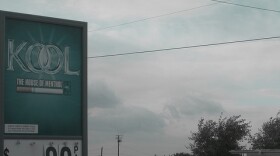All this week on Stateside, we’re looking at the history of the Brewster-Douglass Housing Projects in Detroit. If you’ve ever wondered about why they were created or what it was like to live in them, we’d love to fill you in with our three-part series. Here's part one:
If you remember the projects, you might picture the six identical high-rises on the city’s near east side. Those were the Frederick-Douglass Towers, and they were built in the 1950s and finally destroyed in 2014.
The original projects were built in the 1930s. They were townhouses known as the Brewster Homes. Black families really wanted to live there, and there was a high demand for apartments in the townhouses. Their creation was a big deal, and first lady Eleanor Roosevelt even came to the groundbreaking ceremony.
First, a mini history lesson:
In the 1910s, '20s and '30s, the population of Detroit soared. Housing became scare. If you were black, you were only allowed to live in certain neighborhoods like Brush Park and Black Bottom.
And much of the housing in those areas was slum-like.
“It kind of looked like an old western B movie,” says historian Ken Coleman. “There were dwellings made out of wood and inadequate plumbing. It was built on land that farmers had used in the previous century that had become 40 and 50 and 60 years old.”
Federal and local leaders realized they needed to create safe and affordable housing for black residents.

So Detroit city leaders created a housing commission to address the issue, and they partnered with President Franklin D. Roosevelt’s New Deal program. They created the first federally funded housing project for African-Americans in the nation — the Brewster Homes.
The Brewster Homes were part of a bigger, thriving area that included the neighborhoods of Black Bottom, Brush Park, and the black entertainment district known as Paradise Valley.
Joe Louis, Diana Ross, Della Reese, and many Motown musicians grew up in the area. It was also teeming with business-people, journalists, and civic and religious leaders. Historian Ken Coleman says everybody knew everybody and they truly looked out for each other during that time.
"The guy down the street cared so much about his neighbor's kids. He might be a doctor, he might be a preacher, he might be a foundry worker at Ford Motor Company, and I think that sort of fostered the idea that you can be great."
“The guy down the street cared so much about his neighbor’s kids. He might be a doctor, he might be a preacher, he might be a foundry worker at Ford Motor Company … and I think that sort of fostered the idea that you can be great. That there’s going to be a time we can move out of this community and you can live anywhere you want, whether it be Boston-Edison or West Bloomfield.”
Former residents of the Brewster-Douglass projects told us their neighbors truly looked out for each other. We’ll hear their stories. Plus, we’ve got a fantastic story from Mary Wilson of the Supremes, about how the projects prepared her to become an international star. That’s in our next installment.







